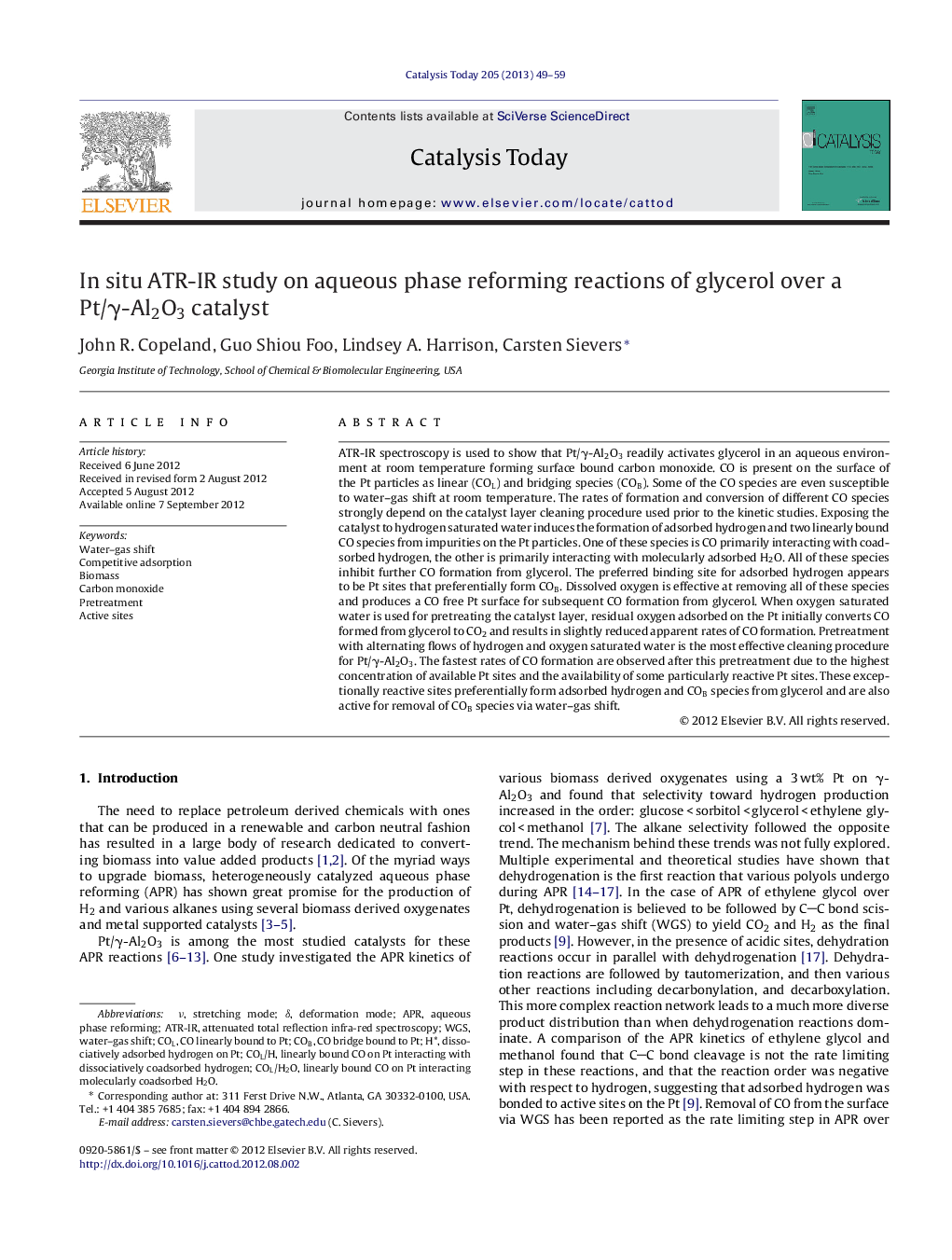| کد مقاله | کد نشریه | سال انتشار | مقاله انگلیسی | نسخه تمام متن |
|---|---|---|---|---|
| 54928 | 47032 | 2013 | 11 صفحه PDF | دانلود رایگان |

ATR-IR spectroscopy is used to show that Pt/γ-Al2O3 readily activates glycerol in an aqueous environment at room temperature forming surface bound carbon monoxide. CO is present on the surface of the Pt particles as linear (COL) and bridging species (COB). Some of the CO species are even susceptible to water–gas shift at room temperature. The rates of formation and conversion of different CO species strongly depend on the catalyst layer cleaning procedure used prior to the kinetic studies. Exposing the catalyst to hydrogen saturated water induces the formation of adsorbed hydrogen and two linearly bound CO species from impurities on the Pt particles. One of these species is CO primarily interacting with coadsorbed hydrogen, the other is primarily interacting with molecularly adsorbed H2O. All of these species inhibit further CO formation from glycerol. The preferred binding site for adsorbed hydrogen appears to be Pt sites that preferentially form COB. Dissolved oxygen is effective at removing all of these species and produces a CO free Pt surface for subsequent CO formation from glycerol. When oxygen saturated water is used for pretreating the catalyst layer, residual oxygen adsorbed on the Pt initially converts CO formed from glycerol to CO2 and results in slightly reduced apparent rates of CO formation. Pretreatment with alternating flows of hydrogen and oxygen saturated water is the most effective cleaning procedure for Pt/γ-Al2O3. The fastest rates of CO formation are observed after this pretreatment due to the highest concentration of available Pt sites and the availability of some particularly reactive Pt sites. These exceptionally reactive sites preferentially form adsorbed hydrogen and COB species from glycerol and are also active for removal of COB species via water–gas shift.
Figure optionsDownload high-quality image (258 K)Download as PowerPoint slideHighlights
► Pt/γ-Al2O3 catalyzes aqueous phase reforming of glycerol at room temperature.
► Dissolved oxygen and hydrogen in water remove impurities from the catalyst.
► An extended cleaning procedure liberates highly active Pt sites for APR reactions.
► Bridging CO is preferentially removed over linear CO by water–gas shift at 25 °C.
► Adsorbed hydrogen and bridging CO compete for the most active Pt sites.
Journal: Catalysis Today - Volume 205, 30 April 2013, Pages 49–59